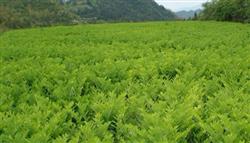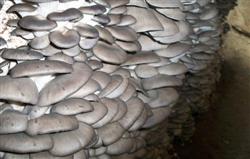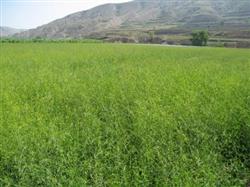How to plant Astragalus membranaceus?

How to plant Astragalus membranaceus? Please give guidance to Astragalus membranaceus, also known as Mianqi, Mianqi, Beiqi, is a leguminous perennial herb. Radix Astragali is divided into Radix Astragali (Radix Astragali) and Radix Astragali (Radix Astragali), which is divided into Radix Astragali (Radix Astragali) and Radix Astragali (Radix Astragali). Its root is used as medicine after drying, which has the effects of tonifying qi and solid surface, diuresis, suppuration, myogenic and other effects. Treatment of shortness of breath, collapse, palpitation, spontaneous sweating, edema, chronic glomerulonephritis, dehydration, chronic diarrhea, uterine prolapse, non-healing of sores. The main results are as follows: 1. The growth habit of Huanghongqi plant is 50ml 80cm high, the main root is thick, cylindrical, slightly Lignified; Honghongqi root bark is rough, reddish brown, internal reddish yellow, white red root bark light white, internal yellowish; astragalus root bark light brown, internal yellow The stem is erect, the upper part is much branched, the leaf blade is odd-pinnate, alternate, round or long oval, all green, raceme, axillary, butterfly-shaped. Astragalus membranaceus is a deep root plant, which should be planted in rich, loose, well-drained sandy soil; like cold and cool climate, strong drought resistance, cold tolerance, fear of heat and waterlogging, high temperature often inhibit growth; seed coat is hard, water absorption is poor, germination rate is low, seed germination does not like high temperature; avoid repeated cropping, should not be planted in heavy saline-alkali land, waterlogging depression, clay land. Second, cultivation techniques 1. Planting in mountains, rivers and rivers at higher elevations and in Eryin land. 2. Select stubble: it is not suitable for continuous cropping with potato, chrysanthemum and Atractylodes macrocephala, avoid rotation with legume crops and avoid continuous cropping. 3. Fertilization and soil preparation should choose high terrain, deep soil layer, loose soil, good drainage, neutral or alkaline sandy loam or cotton sandy land, ploughing and ploughing, more than 5000 kg of ring fertilizer and 50 kg of cake fertilizer per mu (according to GAP standards, little or no pesticides and chemical fertilizers should be used, and areas with no pollution sources should be selected in the area of land scale), and the soil should be raked fine and leveled, and the land prone to waterlogging should be made as a high border. 4. In the seed treatment, the seed coat has pectin layer, the seed coat is very hard, the water absorption is poor, and the emergence rate is low. The seeds must be treated before sowing, and one of the following methods can be chosen according to specific conditions. (1) accelerating germination by boiling water: first, stir the seeds in boiling water for 1 minute, immediately add cold water to reduce the temperature to 40 degrees, then soak for 2 hours, then pour out the water, stew the seeds with sacks and other things for 12 hours, and sow seeds when the seeds expand or the outer skin breaks. (2) sulfuric acid treatment: for late-maturing hard seeds, soak them in sulfuric acid with a concentration of 70mur80 for 5 minutes, then quickly wash them in running water for half an hour before sowing. (3) Fine sand abrasion: the seed coat was slightly worn by rubbing the seed coat with fine sand to facilitate water absorption and greatly increase the germination rate. The treated seeds were soaked in warm water of 30 degrees 50 degrees for 4 hours and sowed after water absorption and expansion. This method is commonly used for planting. 5. Planting methods: there are two kinds: direct seeding and seedling transplanting. (1) Direct seeding method: the new seeds produced in the previous year after artificial treatment are sown in spring after the land is thawed from the end of March to the beginning of April, or sown in winter before the land is frozen in November of the same year, and the seeds sown in winter do not carry out any treatment. In the whole field, according to the row spacing of 30 cm, plant spacing of 12 cm, sowing cover soil thickness of 2 cm, slightly suppressed, the amount of seed used per mu is 3 kg. (2) Seedling transplanting: the yield of direct seeding is low, the quality is poor, and it is difficult to protect seedlings, so the method of seedling transplanting should be adopted in production. In spring or summer, after the seed is pre-treated, it is evenly spread into the field according to the seed amount of 7 kg per mu, the thickness of the soil is 2 cm, a thin layer of fine sand is covered, water should be sprayed many times during drought, seedlings can be produced in 30 days, weeding between seedlings should be done twice at seedling stage, row and plant distance is 6 cm, pest control should be paid attention to, burying soil for thermal storage in the first and middle October of that year, or digging and transplanting seedlings to the field before sprouting in the spring of the following year. When transplanting, open the ditch by 20 cm, put the Qi seedlings obliquely and horizontally according to the distance of 10 cm, so that the upper part of the seedling stands upright, 3 Mel 4 cm from the ground, and the leveling surface is slightly suppressed. 6. Field management (1) determination of seedlings: before direct seeding, when the height of seedlings is 3mur4cm, the seedlings should be filled by transplanting and transplanting. When the height of seedlings is about 10 cm, the seedlings should be fixed according to the spacing of 12 cm. Combine the seedlings to weed and loosen the soil, especially in case of drought, it can be watered properly. (2) topdressing fertilizer: yellow (red) stilbene is more fond of fertilizer, and on the basis of sufficient base fertilizer, topdressing is needed three times a year, after the first seedling is Qi or green, farm manure is applied per mu; after the second ploughing and weeding, the mu is manure; the third time, 2000 kg of high-quality farm manure is applied to the perennial stilbens after withered seedlings in winter, and the cake fertilizer is evenly mixed and then ditched and applied to cultivate the soil. (3) Irrigation and drainage: generally do not water the seedlings, keep the ground a little dry, squat seedlings properly to facilitate root strip elongation. When the weather is particularly dry, it can be watered properly. Timely attention should be paid to drainage in the rainy season to prevent rotting roots. (4) pest control: when grubs and other underground pests are found in the growing period, the plants are drip irrigated with 1000 times of solid trichlorfon, and the aphids can be sprayed with 1000 times of dimethoate EC to control seed wasps of Astragalus membranaceus in green fruit stage. The larvae of bean pod borer were sprayed with 50% malathion 1500ml 2000 times, powdery mildew could be sprayed with stone-sulfur mixture with Baume degree of 0.1 ml 0.3 degrees, or 500 times with 70-100g triadimefon per mu. 7. When the improved varieties were selected and harvested, the aboveground stems were short and thin, the underground parts were hypertrophic and long, and the sides were few, and the roots that did not blossom in the same year were reserved for planting. The secondary root was cut off from the Reed head and planted in the border field where the basal fertilizer was applied. The row spacing was 40 cm, the plant spacing was 26 cm, the trenching depth was 20 cm, the seed root was placed vertically in the ditch, the bud head was facing up, and the top of the Reed head was compacted by 2ml / 3cm from the ground. Blossom and bear seeds from July to September, pick pods and fruits when the seeds turn brown, and pick them as they ripen. After drying, detach the seeds, remove impurities, put them in cloth bags or gunny bags, and store them in a ventilated and dry place. 8. The management measures of harvest and processing are correct. Huang (Hongqi) can be harvested in the same year when it is sown in winter or transplanted in spring, and it can also be harvested in three years. In general, in early January, when the stems and leaves of the plant withered, cut off the aboveground parts of the stems and leaves, opened a ditch with a depth of 60 cents and 70 centimeters at one end of the border, then turned the soil with a long iron fork, plucked out the roots, removed the soil, cut off the Reed head, and dried them until they were dried. After that, the lateral roots and fibrous roots were cut off and bundled into small handfuls, then dried to the whole, and then sold on the market. Perennial fresh goods are exported for peeling processing. Just dry it in the sun. Click to get more planting techniques of Radix Astragali
- Prev

How can Pleurotus ostreatus be cultivated for high yield?
How can Pleurotus ostreatus be cultivated for high yield? Pleurotus ostreatus cultivation has the advantages of less investment, quick effect and small danger. Autumn planting can make full use of the leftovers of agricultural and sideline products and the idle labor force in autumn and winter. It only takes one month from input to output. It is a short and fast project to become rich. Cultivate...
- Next

How to plant Radix Astragali?
How to plant Radix Astragali? Astragalus membranaceus, also known as Mianqi, Mianqi, Beiqi, is a perennial herb of Leguminosae. It is divided into Northeast Astragalus membranaceus (Astragalus membranaceus) and Inner Mongolia Astragalus membranaceus (Radix Astragali). Its root is used for medicine after drying, and it has curative effects such as replenishing qi and solid surface, diuresis, suppressing toxin and expelling pus, promoting muscle production, etc.
Related
- Fuxing push coffee new agricultural production and marketing class: lack of small-scale processing plants
- Jujube rice field leisure farm deep ploughing Yilan for five years to create a space for organic food and play
- Nongyu Farm-A trial of organic papaya for brave women with advanced technology
- Four points for attention in the prevention and control of diseases and insect pests of edible fungi
- How to add nutrient solution to Edible Fungi
- Is there any good way to control edible fungus mites?
- Open Inoculation Technology of Edible Fungi
- Is there any clever way to use fertilizer for edible fungus in winter?
- What agents are used to kill the pathogens of edible fungi in the mushroom shed?
- Rapid drying of Edible Fungi

